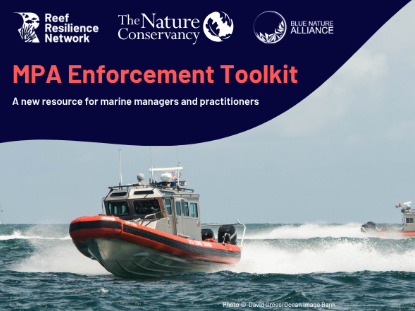
Marine protected areas (MPAs) are essential for conserving marine biodiversity, ensuring sustainable fisheries, and maintaining the health of ocean ecosystems. They also provide economic and cultural benefits, including ecotourism opportunities and the preservation of livelihoods for coastal communities. However, merely establishing an MPA is generally insufficient to secure these protections and benefits.
To achieve their ecological, socio-economic, and cultural objectives, MPAs must have good governance, be well-designed and well-planned, be actively and equitably managed, and address threats. In other words, they must be effectively managed. This toolkit addresses enforcement as a critical component of effective MPA management.
MPA enforcement ensures compliance with regulations designed to protect marine habitats and resources. Effective enforcement addresses illegal activities such as poaching, overfishing, and habitat destruction, all of which can undermine the conservation and other goals of an MPA. Enforcement responses or activities will vary depending on community engagement, as well as the variety and severity of threats being faced by an MPA. Without robust enforcement mechanisms, even the most well-designed MPAs may fail. ref
Integrating compliance strategies within MPA and broader management systems offers an opportunity to reduce the need for enforcement actions. Strategies that prioritize compliance management—including outreach, education, and behavioral approaches—can foster desired behaviors among stakeholders, making the system more balanced, cost-effective, and sustainable. This approach complements enforcement by encouraging voluntary adherence to regulations, freeing resources to focus on more severe or non-compliant activities.












